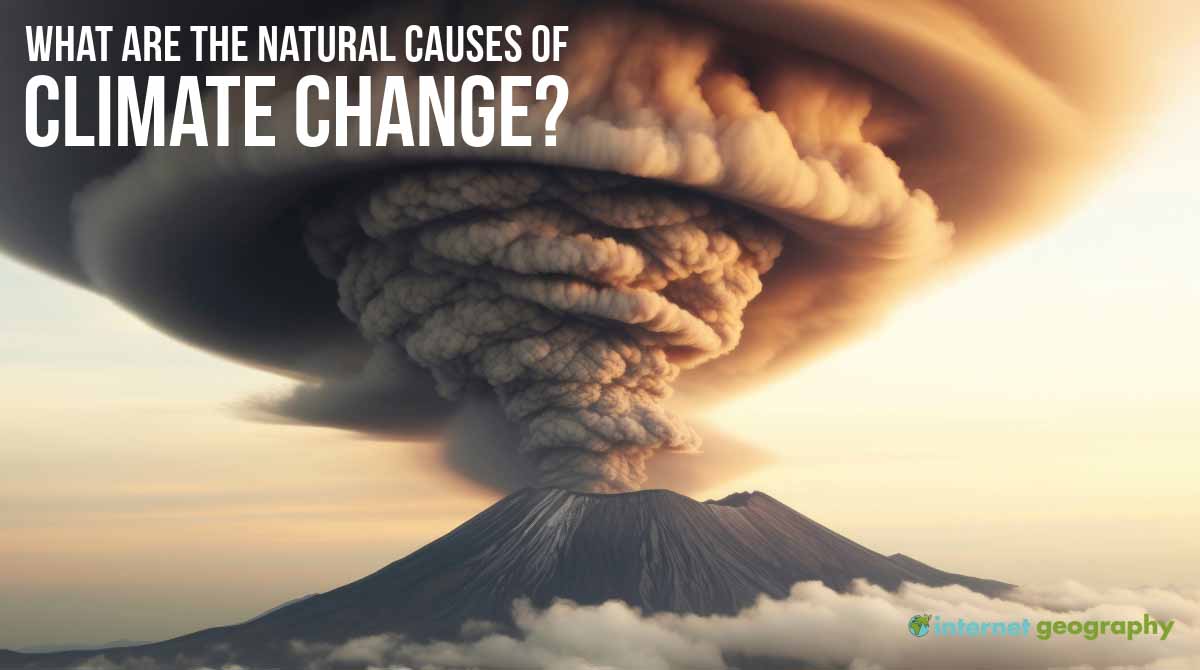What are the natural causes of climate change?
Edexcel B GCSE Geography > Hazardous Earth > What are the natural causes of climate change?

Climate change describes variations in the Earth’s average climatic conditions over time. Throughout the planet’s history, there have been phases of relative warmth and periods of significant cold. During the Quaternary period, which spans the last 2.6 million years, the Earth’s climate has fluctuated repeatedly.
Both natural processes and human activities can drive climate change. For most of Earth’s history, natural causes have been the primary drivers of climate shifts. However, over the past 250 years, particularly since the Industrial Revolution, human activities have dominated the planet’s climate.
Throughout Earth’s history, the climate has undergone numerous changes, often driven by natural causes. These processes have led to periods of warming and cooling long before human activities began to influence the climate. The key natural causes of climate change include:
These natural processes have driven significant shifts in climate, explaining many past climate change events.
Asteroid collisions have been rare but significant contributors to climate change. Large asteroids that strike Earth release enormous amounts of dust and debris into the atmosphere. This can block out sunlight, leading to a temporary cooling effect known as a nuclear winter.
One of the most famous examples is the Chicxulub asteroid impact, which is believed to have contributed to the extinction of the dinosaurs around 66 million years ago. The debris from the impact likely blocked sunlight for months, drastically cooling the Earth’s climate.
Impact on climate:
The Earth’s orbit around the sun is not always the same. Over long periods, it changes due to natural cycles known as Milankovitch Cycles. These cycles influence the amount of solar energy Earth receives and are linked to past climate changes.
The three main types of orbital changes are:
These changes explain long-term climate patterns, such as ice ages. When Earth’s orbit causes less solar energy to reach the planet, global temperatures drop, triggering periods of extensive glaciation.
Impact on climate:
Volcanic eruptions can have both short-term and long-term effects on the climate. When a volcano erupts, it releases gases such as sulfur dioxide (SO₂) and dust and ash into the atmosphere. These particles can reflect sunlight away from the Earth, causing global cooling.
A notable example is the Mount Tambora eruption of 1815, which caused the “Year Without a Summer” in 1816. The ash cloud blocked sunlight, leading to crop failures and food shortages in many parts of the world.
Significant volcanic eruptions can cause short-term cooling, but they also release carbon dioxide (CO₂), a greenhouse gas that contributes to warming over longer periods.
Impact on climate:
The sun’s energy output is not constant; it varies over time, which can lead to climate change on Earth. These variations are due to changes in the number of sunspots—dark spots on the sun’s surface that indicate higher solar activity.
When the sun has more sunspots, it emits slightly more energy, leading to warmer global temperatures. Conversely, fewer sunspots mean less solar energy and cooler temperatures. For example, the Little Ice Age (roughly 1300 to 1850) is partly attributed to a period of low solar activity called the Maunder Minimum.
Impact on climate: